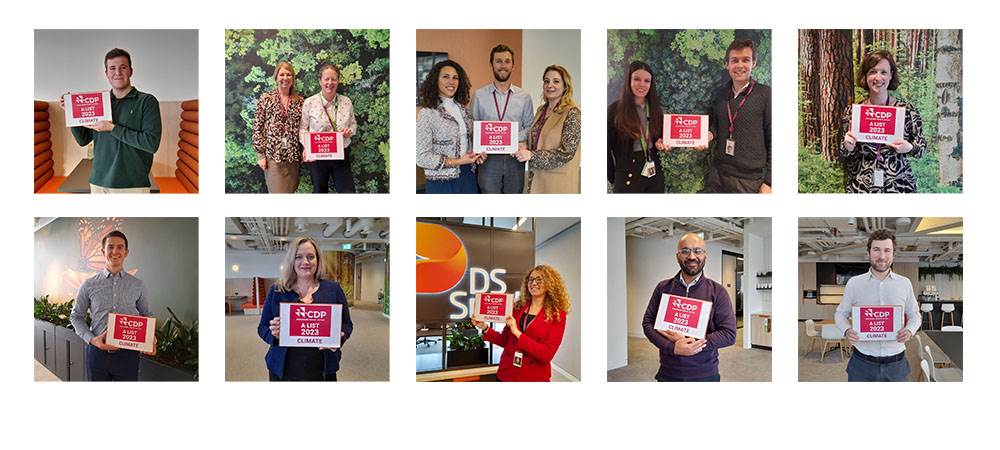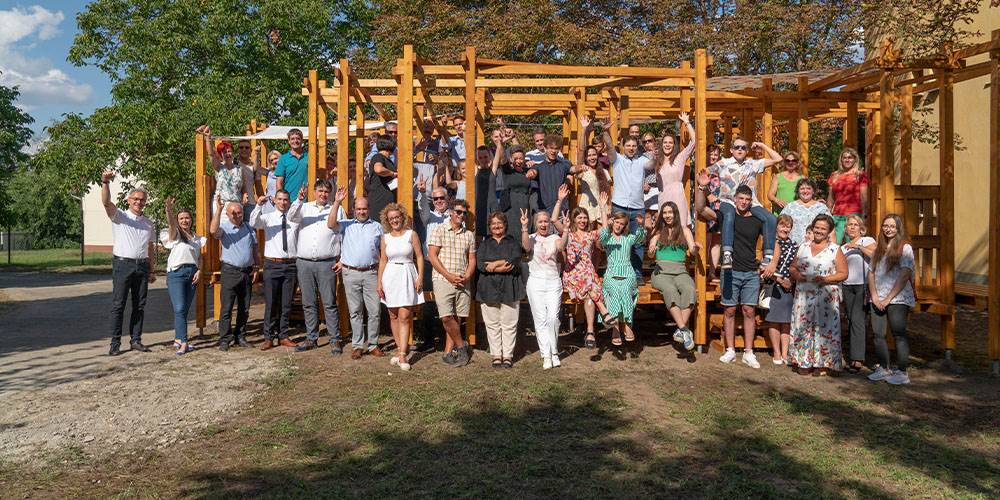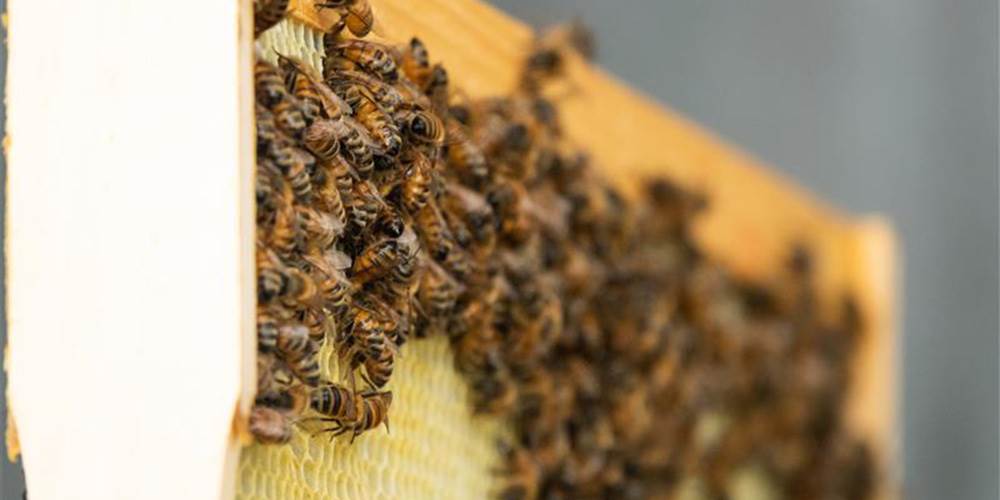To lead the way in sustainability
Our goal is 'Redefining Packaging for a Changing World'. We believe the circular economy is a significant opportunity for us to engage our customers and to help leading brands achieve their sustainability goals.
Our Now & Next Sustainability Strategy, launched in September 2020, has received positive feedback from our customers, employees, and other stakeholders for its emphasis on the circular economy, from designing better products to reducing waste and pollution. We have made significant progress in achieving our targets, with a third of them already accomplished by the end of 2022/23, thanks to the hard work of our teams in Europe and North America.
The world has undergone many changes recently, including the COVID-19 pandemic, the war in Ukraine, and the cost-of-living crisis, making it more critical than ever to act on climate change and regenerate nature. As a result, our stakeholders expect us to use our expertise, scale, and innovation to achieve our goal of becoming a purely fibre-based packaging business with sustainability at its core. We refreshed our Now & Next Sustainability Strategy in 2022/23 to ensure that it remains relevant in our rapidly changing world, focusing on the areas that matter most to our stakeholders and responding to the commercial opportunity of the circular economy.
Our Now & Next Sustainability Strategy centres on four strategic pillars: Circularity, Carbon, People & Communities, and Nature. We have set ambitious targets to transition towards a low-carbon, circular economy that benefits people, nature, and business. We are confident in achieving our sustainability goals by prioritising action on the world's current challenges and keeping an eye on the future.
Circularity
We are designing out waste and pollution through circular design and helping our customers remove one billion pieces of problem plastic by 2025. We are keeping materials in circulation by manufacturing 100 per cent recyclable or reusable packaging, and we have set a new target to launch up to five new innovative reusable packaging pilots by 2025. Our long-term ambition is for all our packaging to be recycled or reused and to send zero waste to landfill by 2030.
Progress
Designing out waste and pollution
We have successfully replaced plastic with recyclable, corrugated alternatives, and the cumulative total has reached 762 million since we initiated our target in 2020/21. Although the overall sales have decreased compared to last year, we are witnessing a strong preference for corrugated packaging as a recyclable substitute for plastic. We have launched multiple campaigns aimed at replacing common sources of plastic for our FMCG customers, such as produce trays, bottle holders, and takeaway food boxes.

Our team has improved our ability to capture and report plastic replacement data, enabling us to respond more quickly to opportunities to convert plastic-based solutions to recyclable alternatives. We design packaging that suits our customers' unique supply chains, using no more material than necessary. In 2022/23, we optimised 64% of new packaging specifications for unique supply chains, which is a significant improvement compared to 26% in 2021/22. This has resulted in design innovation that reduces logistics complexity and minimises downstream GHG emissions. By optimising packaging for efficiency, we drive savings through minor improvements to packaging dimensions, shape, and materials that can multiply over thousands of units, resulting in lower environmental impact and financial savings for our customers.
Our customers' strong approval of our Circular Design Metrics is a testament to our success. We have developed a methodology for analysing supply chain data from our customers and improved the tracking of design projects that more precisely specify packaging to a customer's unique supply chain. The metrics are supported by our Circular Design Principles, utilised by our expert design community, comprising over 700 designers. We ensure that supply chain conditions are integrated into the design process, resulting in leaner packaging that maintains strength, resilience, and recyclability properties.
Keeping materials in circulation
In 2022/23, over 99.7 per cent of the packaging manufactured by our company was either reusable or recyclable, enabling recyclability at scale. We have been actively participating in technical working groups such as 4evergreen, CPI and FEFCO to progress the dialogue on innovation that extends the useful life of materials. In our Research and Development (R&D) efforts, we are prototyping innovations that include fully recyclable, translucent packaging and researching alternative fibres. Our new target is to launch up to five packaging reuse pilot schemes by 2025, and we believe that innovation in materials development, borne out of R&D, will play a crucial role in achieving this target.
We strongly advocate for segregated recycling infrastructure to tackle the 'reject' non-fibre material that enters our circular business, which is the predominant source of waste that we send to landfill. In 2022/23, we sent 204,637 tonnes of waste to landfill, a significant reduction from the previous year (255,920 tonnes) driven by the implementation of several projects. We have made substantial reductions at Kemsley, Rouen, and Belisce mills, with waste-to-energy at Kemsley Mills partly powering the steam generation that is supplied to the mill, incineration for local energy generation purposes at Rouen Mill, and partnering with a local factory for use in cement production at Belisce Mill, demonstrating the circular economy in other parts of our operations.
Carbon
We have set a goal to reduce greenhouse gas (GHG) emissions by 46% in Scope 1, 2, and 3 by 2030 compared to 2019 levels and achieve Net Zero GHG emissions by 2050.
Progress
We have made significant progress towards achieving this goal. In 2022/23, our total GHG emissions across all three scopes were 7,391,418 tonnes CO2e, a 10% reduction compared to the previous year and a 15% reduction since the base year. The primary driver behind this reduction was the highly efficient third-party owned and operated combined heat and power (CHP) plant that powered the 'K4' steam and electricity supply contract at Kemsley Mill. We also launched several renewable electricity contracts and a power purchase agreement, including a 100% renewable electricity tariff for its UK Packaging and Recycling operations. We have also implemented energy efficiency initiatives, including an energy management checklist, case studies, and workshops, delivered as part of its Group-wide ISO 50001 energy management system at 100% of its in-scope sites.
Finally, reduced production levels lowered energy consumption and emissions compared to the previous year. We are continuously working with a specialist energy consultancy to develop plans to achieve our science-based target, including decarbonisation templates for our packaging plants, which identify the major technical solutions that need to be implemented, such as solar and heat pumps, green electricity sourcing, and energy efficiency opportunities. Our decarbonisation roadmap for our paper mills is also being delivered and refined to optimise for best-cost solutions and improve assessments relating to future alternative fuel availability.
In 2022/23, our procurement and paper sourcing teams took an important step towards decarbonising our value chain. We initiated a supplier engagement program to encourage our strategic suppliers to set their own science-based targets with a customised approach based on each supplier's carbon maturity. To support this program, we joined the Supplier Leadership on Climate Transition initiative, founded by some of our key customers. This program aims to facilitate calculating the carbon footprint, setting a science-based target, and implementing an emissions reduction program for our least mature suppliers. Our strategic paper suppliers were given priority since they represent our largest source of upstream emissions.
We plan to engage higher-maturity suppliers as a CDP Supply Chain member in the coming year to enhance our efforts further. Currently, we estimate that 32% of our Scope 3 Category 1 (Purchased Goods and Services) emissions in 2022/23 were generated by suppliers who have set or are setting their own science-based target.

We are committed to promoting a circular economy and assessing the sustainability practices of our suppliers using EcoVadis. Additionally, we require all our suppliers to comply with our Global Supplier Standards. We are pleased to see a significant increase in our customers' engagement on carbon, who are using our Circular Design Metrics to compare the carbon footprint of different packaging specifications to reduce the carbon footprint of their packaging.
People & Communities
We are actively participating in local communities and empowering our workforce to lead the transition to a circular economy to engage 100% of our employees by 2025. We have set progressive targets to enhance diversity in our workforce, including improving gender diversity to 40% female representation in senior leadership positions and increasing diversity across the workforce by 2030. Our human rights due diligence is continuously being strengthened.
Progress
Communities
In 2022/23, we succeeded in engaging 57% of our employees on the circular economy through various channels, including the Circular Economy Master Class, delivered by the University of Exeter and the online Sustainability Hub. We also aimed to engage 5 million people on the circular economy by 2025, which it achieved ahead of its plan. The target has now been extended to 10 million people, including community initiatives such as delivering circular economy lesson plans in schools and engaging on social media.
Furthermore, our community program has continued for the fourth year, with more than 50 full-time employees engaging in various activities and donations aligned with our three community program priorities of biodiversity, circular economy, and circular design. For instance, our employees distributed eco-gesture booklets for young children in France, planted trees in the Hoombos Forest in the Netherlands, and built a second outdoor learning space in Hungary.

People
We have taken significant steps towards respecting human rights by integrating human rights compliance monitoring and reporting into its standard practices. We have launched a Human Rights policy and begun rolling out the SEDEX SAQ questionnaire to assess potential risks and manage identified issues relating to human rights. We are committed to completing the rollout of the SEDEX platform to all sites by 2025. Furthermore, we have continued our business ethics compliance training programme, including modules relating to modern slavery.
We have also committed to providing a safe and inclusive workplace. We have integrated 'Vision Zero', our health and safety campaign, into our Now & Next Sustainability Strategy to achieve our health and safety target of zero harm. We have announced new aspirations to improve gender diversity by aiming for 40% women in senior leadership and improving gender and ethnic diversity across our workforce yearly. We have set an aspiration of other protected characteristics by 2030, emphasising our commitment to developing an inclusive culture where everyone is valued, respected and engaged at work.
Nature
The protection and regeneration of nature is a crucial part of our responsibility towards the environment. To achieve this goal, we are implementing biodiversity programs at our paper mills and measuring and improving the biodiversity in our forests. By 2025, we aim to develop water management plans for all our paper mills and packaging plants. Moreover, our long-term ambition is to employ a science-based approach to regenerate nature and reduce the water withdrawal per tonne of production by 10% by 2030, focusing on our paper mills located in regions at risk of water stress.
Progress
Forests and biodiversity
In 2022/23, we made significant progress in protecting and regenerating forests and biodiversity. Our North American forest project continued its intervention to protect the gopher tortoise population, a keystone species that supports biodiversity in the southeastern United States. Additionally, 13 of our paper mills continued to develop their biodiversity activities as part of their biodiversity programs, including a beehive project at Reading Mill that supports pollination and local plant life. Our commitment to protecting and regenerating forests and biodiversity is reflected in our 100% recycled, FSC®, SFI, or PEFC certification scheme requirements for our forests and paper sourcing.

As we continue our efforts, we will constantly assess our dependence on nature and set targets to regenerate nature based on a science-based approach. We support the Task Force on Nature-related Financial Disclosures (TNFD) framework and believe in the importance of factoring nature into business decisions to drive more restorative and nature-positive outcomes.
Additionally, we have established a deforestation working group to assess the upcoming deforestation regulation and opportunities for closer commodities risk surveillance and monitoring.
Water management
Water management is a crucial aspect of sustainability, and we take a risk-based approach. We have developed water stress mitigation plans and focused water withdrawal reduction actions in areas most likely affected by future water stress. Our efforts in 2022/23 were directed towards maintaining water stress mitigation plans at the 29 sites identified as being at risk of water stress. We have developed business continuity plans, established regular contact with relevant stakeholders such as the water authority and local community, and tracked monthly water performance to ensure we are on track.
As water is a finite natural resource, it is essential to protect it. Therefore, we are taking our work to a new phase and setting a new goal. We aim to implement water management plans at 100% of our paper and packaging sites by 2025. This will go beyond mitigation planning to proactive stewardship, including identifying water-saving opportunities.
In 2022/23, the average water withdrawal per tonne of production at paper mills located in regions at risk of water stress was 8.9 m3/t nsp (tonne net saleable production), which was higher than the previous year's 8.1 m3/t nsp. This increase was due to more shutdown periods requiring drainage and refilling.
By implementing our water management plans, we aim to reduce water consumption and ensure our operations are sustainable.
Governance
Governance is crucial for implementing our Now & Next Sustainability Strategy and efforts towards other ESG/sustainability issues. Our Group Operating Committee (GOC) is responsible for leading Group-wide priorities, with sustainability being one of the top agendas. The Group Chief Executive is ultimately accountable for sustainability, and the Board considers ESG/sustainability-related risks, opportunities and strategy as the core of the Group's operations. The HSES (Health, Safety, Environment and Sustainability) Committee, which convenes monthly, is responsible for overseeing the sustainability activities and discussing several topics such as:
- Circular economy, including recyclability and biodiversity
- Now & Next progress, including monthly GHG forecasts
- Roadmaps to deliver the 1.5°C science-based target
- Supplier engagement for Scope 3 emissions reduction
- Government affairs and the policy environment
- Community affairs programme
- ESG ratings performance.
The Sustainability Leadership Team (SUS LT), chaired by the Head of Corporate Affairs, supports the HSES Committee. This multi-functional Group has senior-level membership from different divisions and functions that receive regular performance updates and are consulted on decisions related to their businesses.
The operational-level sites, responsible for health, safety, and environmental issues, are aided by expert project teams and a sustainability network that helps launch initiatives, progress deliveries, and resolve challenges. The Recyclability Forum and the Deforestation Working Group are examples of horizontal collaborations that unite people from different parts of the business.
The Group Sustainability, Government, and Community Affairs teams collaborate with the business to deliver our sustainability program while advancing our policy agenda. Finally, the Group ESG Reporting team produces environmental, social, and governance (non-financial) data to support the delivery of sustainability and oversee the governance and assurance arrangements required to meet the Group's non-financial reporting commitments.
Alignment with international frameworks
We support several international frameworks that are relevant to corporate responsibility and ethical business conduct, including:
- United Nations Global Compact (UNGC)
- United Nations Declaration of Human Rights and the Convention on the Rights of the Child
- International Labour Organization (ILO) Eight Fundamental Conventions
- Organisation for Economic Co-operation and Development (OECD) Guidelines for Multinational Enterprises
For information on our policies, procedures and performance, please refer to our Sustainability Report.
